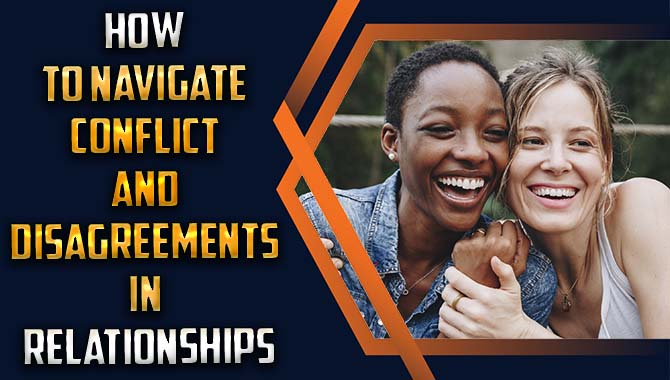Have you ever felt lost in a conversation with a friend from a different culture? It can be confusing, right? You want to connect, but sometimes words or gestures just don’t seem to fit.
In our diverse world, learning how to communicate better with friends from different backgrounds is more important than ever. Did you know that a simple smile can mean many things in various cultures? For example, in some places, it shows happiness, while in others, it can signal nervousness.
Imagine chatting with a friend from Japan who bows instead of shaking hands. Or think about how your friend from Italy uses hand gestures in every story. These quirks can really add flavor to conversations.
So, how can we bridge these gaps? Let’s explore the best ways to communicate better with friends from different cultures. Together, we can dive into the fun of understanding and respecting our differences while still enjoying our friendships!
How To Communicate Better With Friends In Different Cultures

How to Communicate Better with Friends in Different Cultures
Effective communication with friends from different cultures can be fun and rewarding. First, listen actively to understand their viewpoints. Use simple words and avoid slang that may not translate well. Respect cultural differences by being open-minded. Did you know that a smile can mean different things in various cultures? Learning about these differences helps build strong friendships. Sharing experiences and asking questions creates deeper connections and understanding. Communication is not just about words but also how we connect!Understanding Cultural Differences
Explore the concept of culture and its impact on communication styles.. Discuss examples of varying communication norms across cultures..Culture shapes how we communicate. It can change our words, gestures, and even our feelings. For example, some cultures value eye contact, while others see it as rude. In Japan, people use indirect speech to be polite, while in the U.S., being direct is often preferred. These differences can affect friendships.
- In Western cultures, people often speak openly.
- In Eastern cultures, being subtle is common.
- Non-verbal cues can mean different things in each culture.
Understanding these differences helps us connect. Learning about diverse cultures can make our friendships stronger and more enjoyable!
How does culture affect communication?
Culture influences communication by shaping words, gestures, and emotional expressions. Different cultures have unique norms that can lead to misunderstandings if not recognized.
Active Listening Techniques
Importance of active listening in crosscultural communication.. Tips for improving listening skills to better understand friends from different backgrounds..Listening is not just about hearing words; it’s about understanding feelings and ideas. In cross-cultural friendships, active listening is key. By focusing on what your friend says, you show you care. This builds trust and helps avoid misunderstandings.
To boost your listening skills, try these tips:
| Tip | Description |
|---|---|
| Stay Present | Put down your phone and look at your friend. This shows you are interested! |
| Ask Questions | Curiosity helps! Ask about their culture or experiences. |
| Repeat Back | Summarize what they said. “So, you feel…” helps clarify things! |
By using these techniques, you not only improve communication but also show your friend they are valued. Remember, listening is like a bridge; it connects hearts and minds across cultures!
Non-Verbal Communication Styles
Explain how gestures, facial expressions, and body language vary by culture.. Provide guidance on interpreting nonverbal cues accurately..Did you know that how we express ourselves can mean different things in different places? For example, a thumbs-up in the U.S. means “great!” but in some cultures, it might be a no-no. Facial expressions can also change; in one country, smiling might show happiness, while in another, it could mean shyness. Understanding body language is key, as people often say more without speaking than they do with their words. Here’s a fun look at gestures across cultures:
| Gesture | Meaning in the U.S. | Meaning in Japan |
|---|---|---|
| Thumbs-Up | Good job! | Offensive |
| Peace Sign | Peace | Victory (only if palm out) |
| Nodding | Yes | Understanding |
To avoid mix-ups, pay close attention to these nonverbal cues. A smile can go a long way, but make sure it fits the situation! And remember, it’s okay to ask friends if you’re unsure about how to interpret their signals. After all, laughter is still the best universal language!
Adapting Language Use
Discuss the importance of simplicity and clarity in language.. Tips for avoiding jargon and idioms that may not translate well across cultures..Using simple and clear language is key to chatting with friends from different cultures. You want everyone to understand, right? Avoid fancy words and confusing idioms. For example, saying “it’s raining cats and dogs” might make someone think of a pet storm! To help, try this table:
| Complex Phrase | Simple Equivalent |
|---|---|
| Break the ice | Start a conversation |
| Hit the books | Study |
When you choose words carefully, it makes friendships stronger. As the saying goes, “Keep it simple, silly!” So next time, keep clarity front and center. Your friends will thank you! Good communication builds great friendships!
Building Trust and Rapport
Importance of trust in communication and relationshipbuilding.. Strategies for developing mutual respect and understanding among diverse friends..Trust is the secret sauce in friendships. Without it, communication feels like trying to fit a square peg in a round hole! To build trust, share a laugh or a funny story. Respect is key too. Spend time learning about your friend’s culture; it shows you care. Try using a little humor when you chat—laughter really bonds people. Here are some fun ways to create trust:
| Strategy | Description |
|---|---|
| Open Up | Share your thoughts and listen to theirs. |
| Mirror Their Style | Copy a bit of their body language or speech. It’s like friendship magic! |
| Respect Differences | Celebrate what makes you unique. It’s what makes the world fun! |
According to studies, friendships built on trust last longer. So, get ready to sprinkle some trust and laughter in your conversations!
Resolving Conflicts Across Cultures
Common sources of conflict in crosscultural friendships.. Techniques for addressing misunderstandings and finding common ground..Conflicts can happen in friendships between different cultures. Common sources of trouble include language barriers, different customs, and misunderstood jokes. These issues can make friends feel upset. To solve them, it’s important to listen well and be patient. Here are some good steps:
- Ask questions to understand each other.
- Share feelings without blaming anyone.
- Look for things you both enjoy together.
Finding common ground helps friendships grow. Remember, talking and sharing can clear up misunderstandings.
What are common sources of conflict in cross-cultural friendships?
Common sources include language differences, cultural customs, and differences in humor.
Embracing Cultural Exchange
The benefits of sharing cultural experiences with friends.. Suggestions for activities that promote cultural exchange and learning..Sharing cultural experiences with friends is like adding spice to a bland dish. It makes everything exciting! You get to learn new traditions, foods, and languages. Plus, you may find out your friend makes the best curry. Who knew? Activities like cooking classes, dance sessions, or language games can really boost understanding and laughter. After all, nothing says friendship like attempting a dance move and failing hilariously!
| Activity | Benefit |
|---|---|
| Cooking Together | Learn new recipes and enjoy delicious food |
| Language Exchange | Practice new languages while having fun |
| Cultural Festivals | Experience traditions and meet new people |
Resources for Further Learning
Recommend books, websites, and courses on intercultural communication.. Encourage ongoing education about different cultures to enhance friendships..Want to dive deeper into understanding friends from different cultures? Check out some fabulous resources below. Grabbing a book like “The Culture Map” can open your eyes to different norms. Websites like Culturally Speaking offer great insights. YouTube also has courses on intercultural communication that are both fun and educational. Remember, learning about another culture can be like finding hidden treasure. Keep exploring!
| Resource Type | Name | Description |
|---|---|---|
| Book | “The Culture Map” | A journey through cultural differences and communication styles. |
| Website | Culturally Speaking | Insights and articles on intercultural topics. |
| Course | YouTube Intercultural Communication | Video lessons that make learning fun! |
Enhancing friendships through understanding is like adding more toppings to your ice cream—it’s always better!
Conclusion
In conclusion, communicating better with friends from different cultures starts with open-mindedness and respect. We should listen carefully and ask questions. Learning a few key phrases in their language can help too. Don’t forget to share your own culture. Let’s practice these skills every day. For more tips, check out resources about cultural communication!FAQs
What Strategies Can One Use To Overcome Language Barriers When Communicating With Friends From Different Cultural Backgrounds?To overcome language barriers with friends from different cultures, you can use simple words and speak slowly. You can also use gestures or drawings to help explain your ideas. If you don’t understand something, it’s okay to ask questions. Listening carefully and repeating what you hear can also help. Remember, being patient and friendly makes communication easier!
How Can Understanding Non-Verbal Communication Differences Enhance Interactions With Friends From Diverse Cultures?Understanding non-verbal communication is important when you have friends from different cultures. Non-verbal cues include body language, eye contact, and facial expressions. These can mean different things in different cultures. For example, a thumbs up is good in some places but rude in others. By learning these differences, you can avoid misunderstandings and connect better with your friends.
What Role Does Cultural Context Play In Shaping The Way We Interpret Conversations With Friends From Different Backgrounds?Cultural context helps us understand how friends from different backgrounds talk. Each culture has its own ways of speaking, using colors, or making jokes. When we know these differences, we listen better and show respect. This helps us connect with our friends. Understanding their culture can make conversations more fun and meaningful.
How Can Practicing Active Listening Improve Cross-Cultural Friendships And Foster Better Understanding?Practicing active listening helps us understand our friends better. When we really pay attention, we show that we care. This is important in cross-cultural friendships because we learn about different beliefs and customs. By listening carefully, we build trust and respect. This helps our friendships grow stronger.
What Are Some Effective Ways To Navigate And Respect Cultural Differences During Discussions About Sensitive Topics?To respect cultural differences, we should listen carefully and be kind. It helps to ask questions and learn about others’ beliefs. We can avoid making assumptions or judging too quickly. Using clear language is also important so everyone understands. Sharing our own feelings can help create a friendly talk, too.








